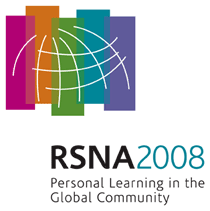
Abstract Archives of the RSNA, 2008
Yehonatan Nizan Turner MD, Presenter: Nothing to Disclose
Irith Hadas-Halpern MD, Abstract Co-Author: Nothing to Disclose
To evaluate the effects of adding the patient's photograph on the radiographic workup.
A total of 1,137 CT examinations where performed at a single tertiary-care hospital in January, 2008. Two hundres and sixty-seven patients referred for CT agreed to being photographed prior to the examination. Mean patient age was 62.9 years (range 20-95). These patients comprised the study group, and their pictures were added to their file in the PACS. The photographs appeared automatically when opening the file. Fifteen radiologists who interpreted the examinations were asked to complete a questionnaire composed for the purpose of this study addressing their attitude toward the examinations after seeing the patients’ pictures. In order to assess the effect on the interpretation, 30 examinations from the study group containing incidental findings were shown again in a blinded fashion to the same radiologists after 3 months without the patients' photographs.
All radiologists felt more empathy to the patients after seeing the photograph. The photographs revealed medical information such as suffering or physical signs of disease. Out of the 30 cases which were presented twice, in 80% the incidental findings were not reported when the photograph was omitted from the file. All radiologists involved reported that the addition of the photograph did not lengthen the duration of the examination, however did render the interpretation more meticulous. All recommended adopting this idea to routine practice.
The addition of a patient's photograph to the radiographic images may be beneficial in interpreting examinations when the radiologist is not in physical contact with the patient. Further research with larger sample sizes is required, in order to verify the significance of this study.
Radiologists often review CT images at a later time or from remote locations and lack physician patient contact. Addition of a photograph enables a more personal approach.
Turner, Y,
Hadas-Halpern, I,
The Effects of Including a Patient's Photograph to the Radiographic Examination. Radiological Society of North America 2008 Scientific Assembly and Annual Meeting, February 18 - February 20, 2008 ,Chicago IL.
http://archive.rsna.org/2008/6008880.html

